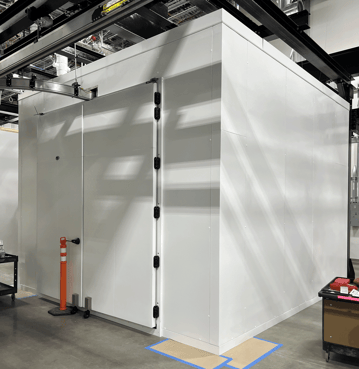How Environmental Test Chambers Prepare Satellites for Space
 Space missions can’t afford failure. A single malfunction in orbit can compromise critical communications, navigation, or research. That’s why satellite manufacturers and the aerospace industry turn to environmental test chambers to replicate the harsh realities of space and ensure every component can survive.
Space missions can’t afford failure. A single malfunction in orbit can compromise critical communications, navigation, or research. That’s why satellite manufacturers and the aerospace industry turn to environmental test chambers to replicate the harsh realities of space and ensure every component can survive.
Why Do Satellites Need Environmental Testing
Space is unforgiving. Once a satellite leaves Earth, there’s no room for error. That’s why every component is tested to survive:
- Extreme Temperature Swings
In orbit, satellites can experience temperature fluctuations from blistering heat to bone-chilling cold within minutes as they move between sunlight and darkness. - Pre-Launch Stresses
Launches subject satellites to intense vibrations and rapid temperature changes, pushing materials and electronics to their limits. - Long-Term Reliability
Satellites often operate for 10 to 15 years without maintenance. Any failure could mean the end of a mission worth hundreds of millions of dollars.
To make sure that happens, engineers replicate these challenges on Earth using controlled environments that push components to their breaking point—before they ever leave the ground.
Test Chambers That Prepare Satellites for Space
It starts with chambers designed to mimic the extreme conditions satellites will face in orbit. These are the types of chambers you will typically see in space simulations
- Thermal Shock Testing
Components are quickly shifted between very hot and very cold temperatures, mirroring the rapid temperature changes of orbit. - Temperature Cycling
Repeated swings across a wide temperature range ensure the satellite can operate reliably over many years. - Humidity Testing
Even a small amount of moisture can damage sensitive electronics; humidity tests catch problems early. - Lab Oven Testing
Individual components often go through precise thermal cycles or stress testing in lab ovens to verify materials, electronics, and assemblies can handle extreme heat before integration into the full satellite system.
At AES, we make this possible with solutions that fit everything from small electronics to entire satellite structures. Our chambers range from compact 1 cu. ft. benchtop units to fully customizable walk-in rooms capable of holding large assemblies for extensive test cycles.
Real-World Example
Here’s one we’re proud of: A global technology leader came to AES with a big challenge to build six walk-in environmental chambers for their satellite testing program.
These weren’t off-the-shelf units. They needed precise temperature control, humidity simulation, and the ability to handle massive components (satellietes). AES delivered, giving them the tools, installed each chamber to validate every detail before launch day.
That’s what we do best, designing chambers that match the mission.
Testing Today for Space Tomorrow
Satellites don’t just survive space by luck; they survive because every detail was tested, re-tested, and proven before they left the ground.
From small components to full-scale systems, AES has been helping aerospace innovators make that possible for decades.
Need an environmental chamber for your next mission-critical project? Contact AES for us to support your next project.


